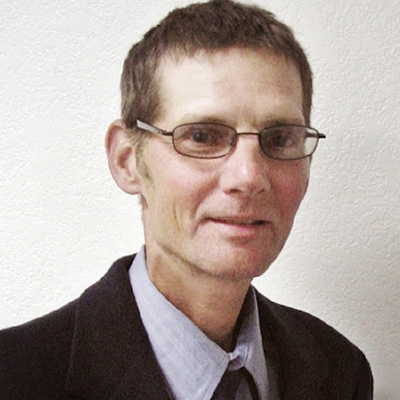The result? Pima County taxpayers are scoreless after three years with Zucker and playing serious catch-up after their fifth season hosting the Sidewinders at Tucson Electric Park.
Zucker, after threatening a move to the city's Hi Corbett Field, announced late last week that he would keep the Sidewinders at Tucson Electric Park. The decision, which had more to do with Zucker's inability to get as sweet a deal from the city than his love for the county, came a month after he settled year-old county bills for 50 cents on the dollar.
Zucker bought the Sidewinders from millionaire businessman and land speculator Martin Stone for a reported $8 million before the 2000 season. The Sidewinders, Triple-A affiliate of the World Champion Arizona Diamondbacks, have lost about $1 million in their three seasons at Tucson Electric Park.
For taxpayers, saddled with a nearly $50 million stadium and spring training complex, it's worse. Principal and interest owed on the stadium amount to $35 million and combined annual losses are now at $6 million. Taxes that the Board of Supervisors adopted from 1991 through 1997 to pay for the baseball complex included a $3.50 surcharge on car rentals, a 1 percent hotel bed tax and a 50-cent-a-night tax on RV space rental. But those taxes have failed to keep local taxpayers from subsidizing Tucson Electric Park and the training facilities with property and other local taxes.
Still, bookkeeping that even county officials concede was not up to standards allowed Zucker to avoid paying half of the operating expenses from last year.
The Sidewinders reported attendance of 241,991, the lowest in the 16-team Pacific Coast League, in 2001. But Zucker paid base rent of just $30,000, the amount due if the official attendance under the county contract was less than 200,000 because. Rent should be $60,000 if attendance is between 200,000 and 400,000 and hits $90,000 if attendance exceeds 400,000 over the course of a 70-game home season that runs from April 1 through early September.
Zucker unilaterally scrapped parking charges and instead paid the county $11,503. But other expenses, ranging from nearly $15,000 in city garbage collection fees to $490 for elevator repair, totaled $25,395.63 for the 2001 season, according to county records.
Although the contract calls for reconciliation 30 days after the end of the season, Zucker and his lawyer, James Sakrison, haggled with the county for nearly a year before agreeing to cough up half the amount due--$12,697.82.
This year, the Sidewinders reported 268,807 in attendance, an average 3,895 for 69 games at Tucson Electric Park, which can accommodate 11,000. The team drew more than only Calgary and Colorado Springs, where PCL play opens in troublesome cold weather.
Sacramento, which won the PCL title, mirrored a nationwide trend of a surge in popularity in minor league baseball. The River Cats drew 817,317 fans. Memphis, the Triple-A affiliate of the St. Louis Cardinals, followed with 794,550.
Zucker, who made his fortune selling a Spanish-language television station, can thank Stone for lease provisions that shut out the county on food and drink concession revenue when season attendance is below 250,000.
The low base rent was a concern, at least for Democratic Supervisors Dan Eckstrom and Sharon Bronson, in 1997. Field maintenance alone was projected to cost $35,000 a year. Eckstrom also complained about the county playing the bank for 30 days, let alone a year. But he and Bronson were outvoted on the baseball lease by Republican Ray Carroll and then-Supervisors Mike Boyd, a Republican, and Raul Grijalva, a Democrat.
Carol Bonchalk, head of financial operations for the county, conceded that the county has not done a good job pinpointing all expenses in order to justify provisions in the lease that call for reimbursement of direct costs and a blanket statement that the county cannot lose money.
The lease is problematic, she said, because it does not allow the county to bill for wear and tear on items such as air conditioning systems that keep the luxury and press suites cool.
The county has hauled in more money from single-day events like concerts than it has from a Sidewinders season.
The Diamondbacks and Chicago White Sox, which have shared Tucson Electric Park since 1998, reported big increases in attendance during spring training. The Diamondbacks drew 147,449 for 16 games, up from 95,208 in 2001 but still slightly less than the high mark set in the inaugural season. The White Sox attendance jumped more than 20,000 this year, to 87,670.
The county earned more than $935,000 from the month-long spring training season, including $372,086 in ticket shares, $478,632 in food and drink concessions and $85,000 in parking.
The Colorado Rockies, who replaced the Cleveland Indians at the city's Hi Corbett Field in 1993, drew 68,314. That was a slight improvement over the 2001 figure but a sharp decline from the 103,475 in 1997, the Rockies' last year as the only spring training show in Tucson.
Zucker and Diamondbacks brass complained about the county's work to maintain fields for two years and Zucker last year began scoping the smaller Hi Corbett. But when it became clear he couldn't get a better deal from the city, which had a tighter lease that brought in at least $750 a game--more than $50,000 a season--from the Sidewinders' predecessors, the Tucson Toros, his calls to county officials became conciliatory.
And on Friday he sent word that the Sidewinders would stay put.
"An opportunity to utilize Hi Corbett Field had recently presented itself," Zucker said. "However, upon an analysis of both stadiums, we believe it is in the best interest of our community and organization to continue to play ball at TEP."











